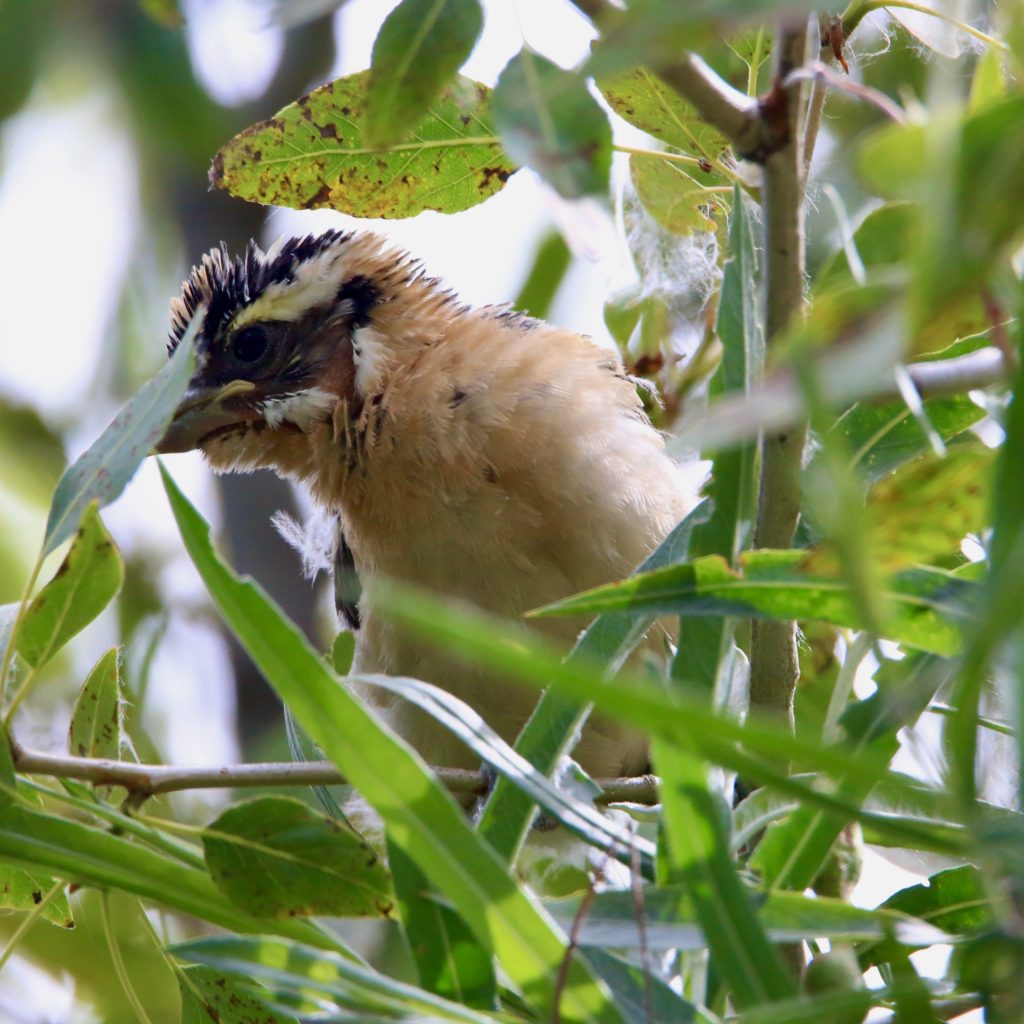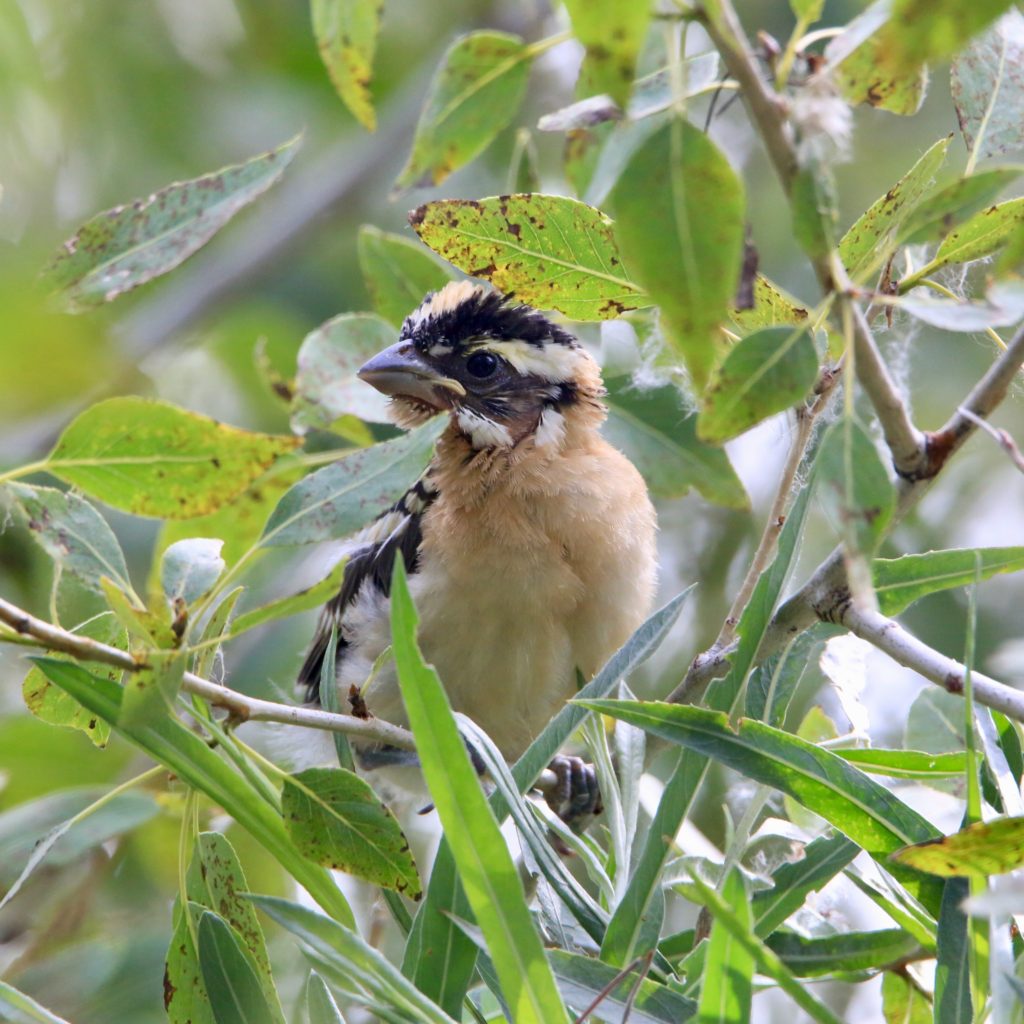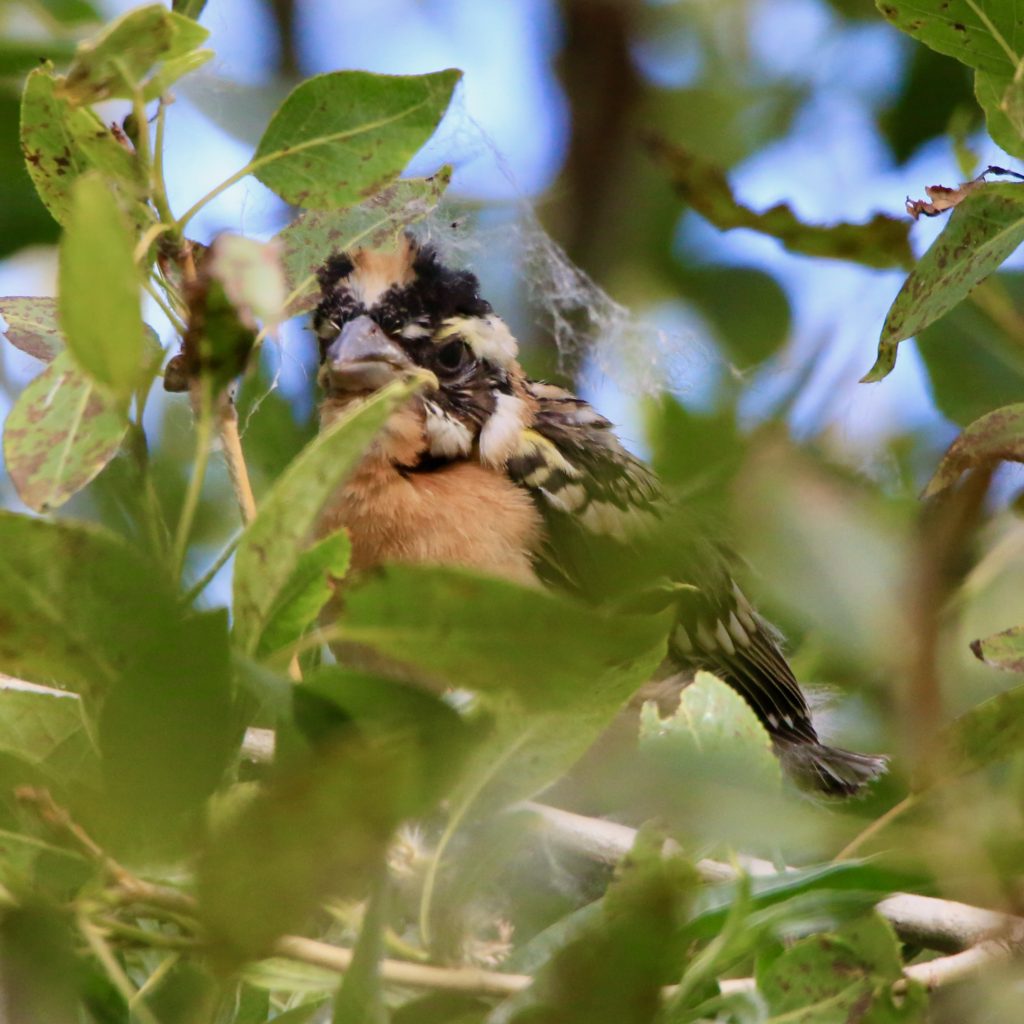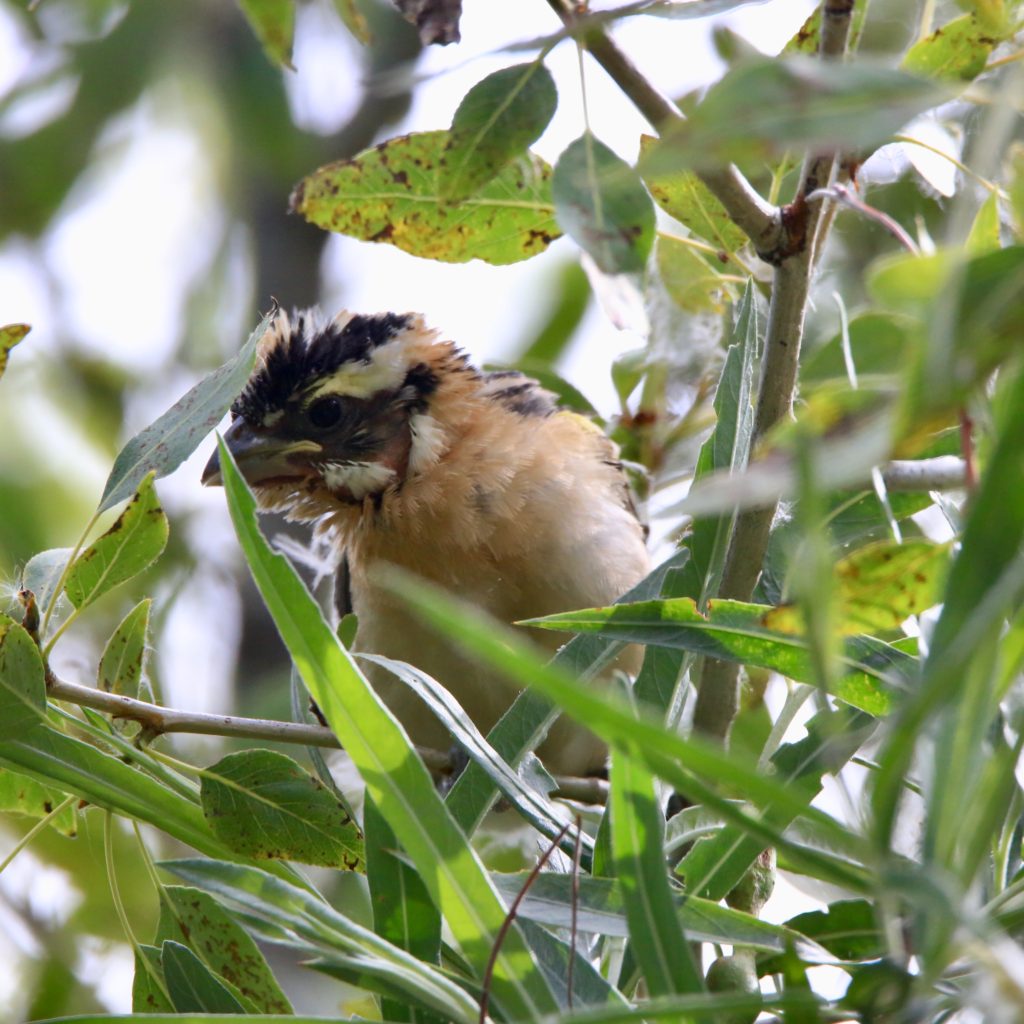
Black-headed Grosbeak
A Black-headed Grosbeak is a fun bird to see while bird watching. Below are some tips to help you identify Black-headed Grosbeaks. We have also put together a list of fun Black-Headed Grosbeak t-shirts, Black Headed Grosbeak bird patches, bird houses, bird feeders, binoculars, stickers and other fun bird watching items.
About Black-headed Grosbeaks
The Black-headed Grosbeak is a fairly small bird but when compared to other types of birds in the same family, they are considered medium-sized birds. They are a seed-eating bird native to North America. The Black-headed Grosbeak is distributed through the western regions of North America. Their nesting grounds are in southwestern British Columbia and have a presence in western-Central America down to Mexico over winter. This makes them migratory birds. They are widespread and common in America while their numbers are stable.
These birds are common in the foothills and riverside woods of western North America. Woodlands in these areas often resound their consistent whistling as the young ones beg for food. The male and females can often be found perched on shrubs in the desert. They one of the few birds that feed on the monarch butterflies which are known for their noxious chemicals. Some of their distinctive features include:
Description and Identification
Black-headed Grosbeaks are small birds about 7 – 7.5 inches long with large, blackheads, as per their names. They have very large conical bills that are thick at the base along with short necks. Their tails are short and black with white patches. Their black wings can have a wingspan of almost 12.5 inches. There is a high level of sexual dimorphism in this species, with the differences mainly visible through the colorations of the birds. The males tend to have blackheads with dark to tawny breasts with yellow bellies while females and juveniles have brown heads with warm orange or white breasts. The females also have sparrow-like black streaks on their backs and white streaks over their eyes and cheeks. They also have grayish-brown wings and tails with two white wing bars and yellow edges.
Black-headed Grosbeak Color Pattern
The male Black-headed Grosbeak has a blackhead coupled with black wings and a tail with white patches. Its breast is orange and has a yellow belly. On the contrary, the female’s head, neck, and back are brown with streaking that resembles those of the sparrow. Their breasts are white while their tail and wings are grayish-brown.
Bleeding males are primarily orange-cinnamon and have blackheads. Their wings are black- white. The females and the young ones are primarily brown with warm orange underparts. Their bill is gray for all sexes. Their feet and legs are black.
Black-headed Grosbeak Size
They are medium-sized birds with their body length ranging 18-19cm and a wingspan of about 30-33cm. The bird has an average body mass of 47g.
These hefty songbirds have large bills that are thick at the base and conical. Their large heads, short tails, and short and thick necks make them assume a more compact look.
The relative size of both sexes
- Length range: 7.1-7.5 in (18-19 cm)
- Weight: 1.2-1.7 oz (35-49 g)
- Wingspan range: 12.6 in (32 cm)
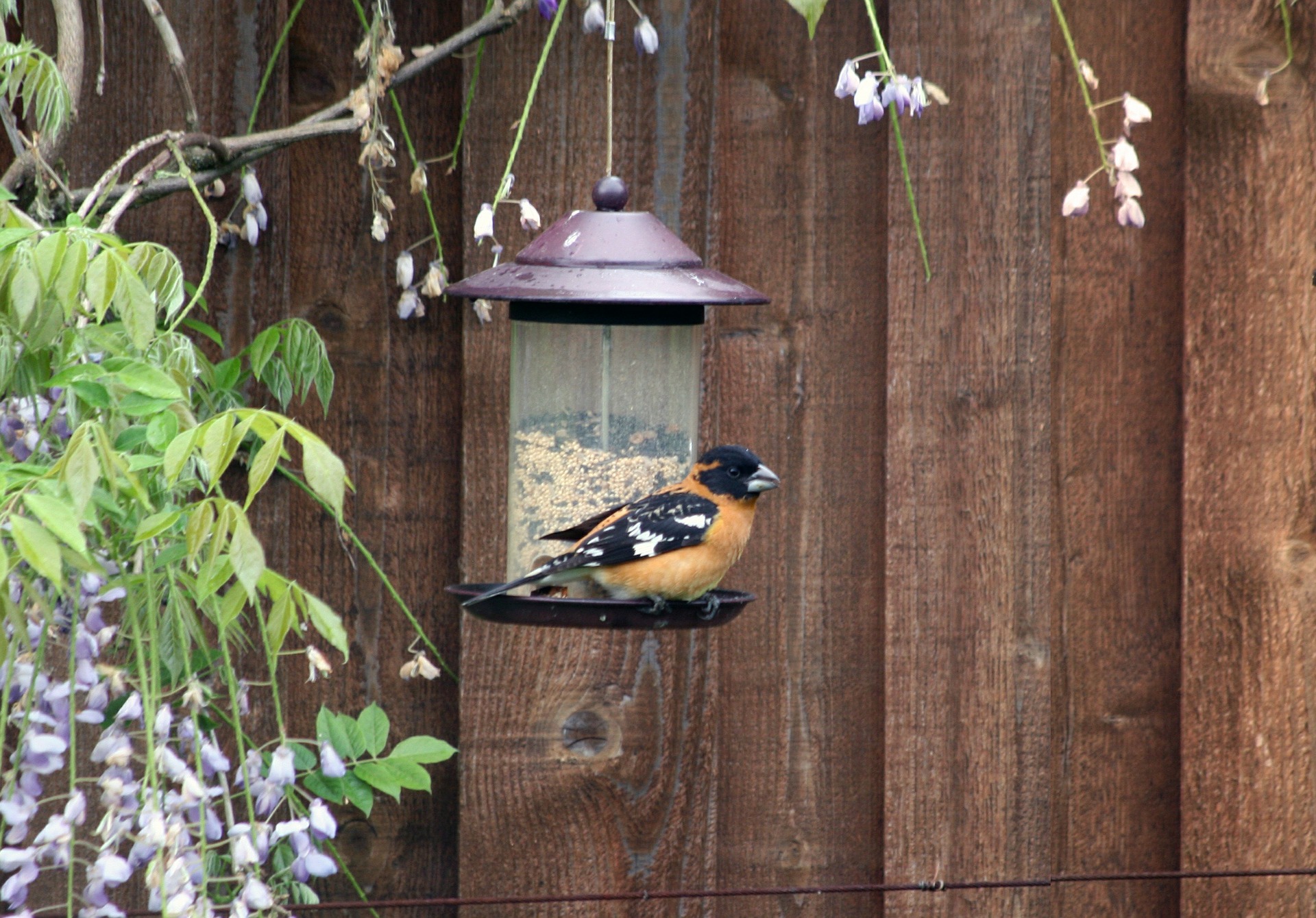
Black-headed Grosbeak Behavior
The Black-headed Grosbeak mostly looks for its food in treetops and rarely lunges towards insects mid-0air. They use their hardened bills to crash seeds and hard-shelled insects. While looking for food they hop from branch to branch.
After spring migration, the males begin courting the females with vigorous singing and striking displays commonly referred to as nuptial flights lasting 8 to 10 seconds.
Black-headed Grosbeaks often stay hidden under dense thickets where they hunt for insects and feed on seeds. They rapidly feed on sunflower seeds at feeders and when perched, dart to catch insects in mid-air. The male sings in a rich and melodious whistle that can be heard from treetops.
What Black-headed Grosbeak Eat
The large and hard bills of these birds are ideal for cracking seeds and snatching hard-bodied insects. Insects are nearly 60% of their diets during breeding seasons and can include beetles, snails, and spiders. During migration, they tend to prefer berries and consume juniper berries, poison oak, and elderberries. Cultivated orchard fruits like mulberries, figs, cherries, apricots, plums, blackberries, and crab-apples also constitute important parts of their diets. Other regular food items include grains like wheat and weed seeds like the dock, pigweed, and chickweed.
They mainly feed on insects, seeds and berries. Insects are available in abundance during summer and they include beetles, wasps, bees, caterpillars and dragonflies. They also eat spiders and snails.
They mostly feed on seeds, insects, and berries. In the summer they feed heavily on insects such as caterpillars, bees, wasps, flies, bees and can also feed on spiders and snails. They also feed on seeds of various plants and also berries.
Where Black-headed Grosbeaks Live
These birds tend to prefer deciduous and mixed-wood areas in general. However, they can be found in a variety of different habitats if there is a steady source of water along with a diversity of plants available. They avoid arid areas like the chaparral or deserts while also steering clear from regions with little vegetative variety like coniferous forests or grasslands. Despite these preferences, they can be found along the edges of such regions where there is an intermixture with other kinds of vegetation. It has been observed that large trees with rich understories near water bodies are ideal nesting locations for these birds. Black-headed Grosbeaks can be found in groves of cottonwood, aspen in floodplains, broken pine forests, deciduous canyons and valleys, gardens, orchards, and even suburban areas in urban settlements.
The Black-headed Grosbeak will commonly be found in deciduous and mixed woods. They breed in oak woodlands, pine-oak woods in the mountains and streamside groves of cottonwood and willow.
They prefer habitats that are close to a water source and have diverse plants. Black-headed grosbeaks avoid long stretches of deserts, coniferous forests or grasslands, but you spot them where either of the habitats meets. They winter in subtropical and tropical lowlands of Mexico.
Range and Migration

Black-headed Grosbeaks are small seed-eating birds that can be found from southwestern British Columbia, through western United States until central Mexico. They are migratory birds that breed along the Pacific coast and the US Great Plains around the Rocky Mountains in the Canadian and American areas, and subsequently migrate to the mountains in Mexico during the winter. Some lone vagrants have been found in Central America as well.
Black-headed Grosbeak Lifecycle
The female can clutch between 3-5 eggs per brooding season. She incubates the egg for 12-14 days before the young hatch. The young take 11-12 days to climb outside the nest and take their first flight 2 weeks after.
The females lay 3-4 eggs which are incubated by both parents for 12-14 days. The female solely incubates them at night. The nestlings are fed by both parents and leave the nest after 11-12 days and fledge 2 weeks later. They have a lifespan of 5-6 years in the wild.
Nesting
Nesting spots are usually chosen on the outer branches of tall deciduous trees around 25 feet above the ground. These spots are well-covered by leaves and serve as cooling spots for the eggs in many cases. The nesting is done by the female, who gathers small twigs, stems, rootlets, and pine needles to create the structure of the cup. The inner cup is lined with finer stems, rootlets, hair, strings, and vegetation with a 1 – 2 inch deep hollow. The final construction of the nest results in a loose structure that provides maximum ventilation to the eggs. Each brood has 1 – 5 eggs in a clutch along with an incubation period of 12 – 14 days.
Ornithology
Bird Watching Academy & Camp Subscription Boxes
At Bird Watching Academy & Camp we help kids, youth, and adults get excited and involved in bird watching. We have several monthly subscription boxes that you can subscribe to. Our monthly subscription boxes help kids, youth, and adults learn about birds, bird watching, and bird conservation.
Bird Watching Binoculars for Identifying Black Headed Grosbeaks
The most common types of bird watching binoculars for viewing Black Headed Grosbeaks are 8×21 binoculars and 10×42 binoculars. Bird Watching Academy & Camp sells really nice 8×21 binoculars and 10×42 binoculars. You can view and purchase them here.
Black Headed Grosbeak T-shirts
If you love the Black Headed Grosbeak you should purchase a Bird Watching Academy & Camp T-shirt. To help support bird conservation we donate 10 percent to bird conservation activities.
Black Headed Grosbeak Iron On Patches
Kids, Youth, and Adults love to collect our Bird Watching Academy & Camp iron on patches. Our bird watching patches help you keep track of the birds you have seen an identified. You can also display the patches on our Bird Watching Academy & Camp banners.
The Black Headed Grosbeak is a great iron on patch to start your collection with. The patches are durable and can be sewn on or ironed on to just about anything.
Black Headed Grosbeak Stickers
Stickers are a great way for you to display your love for bird watching and the Black Headed Grosbeak. We sell a monthly subscription sticker pack. The sticker packs have 12 bird stickers. These sticker packs will help your kids learn new birds every month.
Bird Feeders For Black Headed Grosbeak
There are many types of bird feeders. Here are our favorite bird feeders for your backyard. We use all of these bird feeders currently. Kids will have a great time watching birds eat at these bird feeders. Using this collection of bird feeders will provide a wide variety and many types of birds.
Best Bird Houses for Black Headed Grosbeak
There are many types of bird houses. Building a bird house is always fun but can be frustrating. These 4 bird houses have become our favorites. Getting a bird house for kids to watch birds grow is always fun. We spent a little extra money on these bird houses but they have been worth the higher price and look great.


